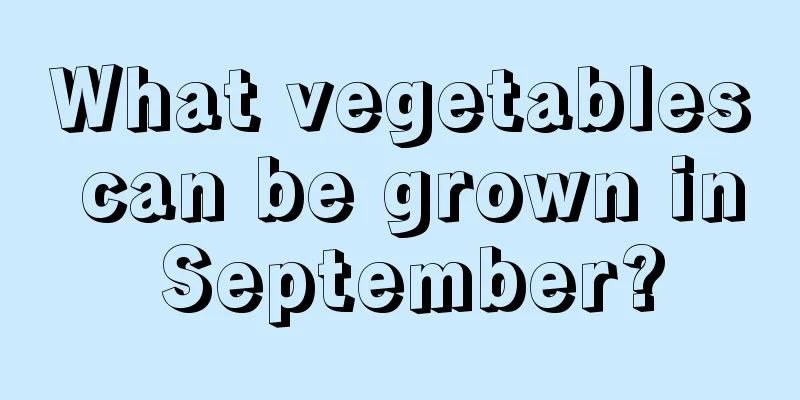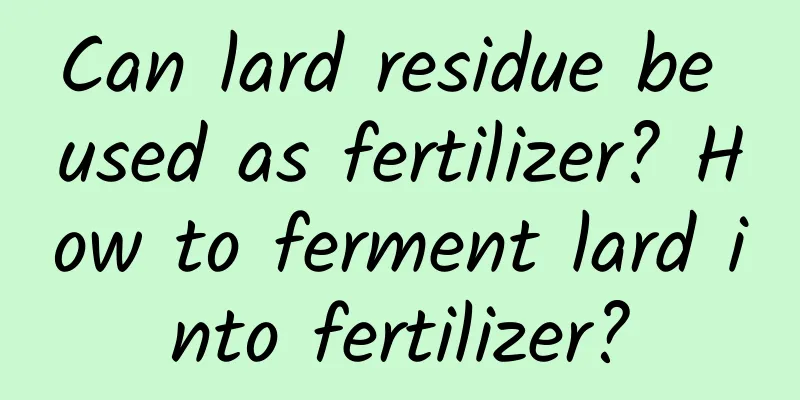What vegetables can be grown in September?

|
After entering September, the remaining heat of summer gradually dissipates and the weather begins to become cooler. This is an ideal planting time for many vegetables . So what vegetables can be grown in September? Let’s learn more about it below. 1. Lettuce Lettuce prefers a cool environment. It is neither cold-resistant nor heat-resistant, so it is very suitable to plant it in September in autumn. During the planting process, lettuce can be transplanted from seedlings or directly sown, with a density of about 10-15 cm per plant. It can usually be harvested within 50-60 days after planting. 2. Green onions The green onions planted in autumn are mainly concentrated around the time of the White Dew (September-October), which are called White Dew Onions. When planting, you need to choose high-quality seeds, cultivate deeply and carefully, weed regularly, and keep the soil moist. 3. Carrots Carrots prefer cool weather and can be sown at any time in August to October in South China and Southwest China, and can be harvested 70 to 90 days after sowing. 4. Peas The best time to sow peas in autumn is usually September. When planting peas in autumn, early-maturing varieties are generally chosen and harvested in November. This allows them to be harvested before the temperature drops to avoid a reduction in yield. 5. Fast food Kuaicai is a new type of cabbage vegetable that has been introduced in recent years. It grows fast and can usually be harvested one month after sowing. And it likes cool climate, so it is particularly suitable for planting in cool environment such as September and autumn. 6. Chrysanthemum Chrysanthemum chrysanthemum, also known as emperor's vegetable, is a royal delicacy in ancient China. This vegetable usually grows best in a mild and cool environment with a relative soil humidity of 70%-80%. Moreover, under long-day conditions, Chinese cabbage will quickly enter reproductive growth and bloom and produce seeds. Therefore, September is the best time to sow Chinese cabbage. 7. Garlic Garlic is a vegetable suitable for planting in September. Especially after planting in early September, it can be ensured that its height reaches about 10 cm in winter, which is conducive to its safe wintering. 8. Coriander Coriander can usually be planted all year round, but generally speaking, April and September are the best planting times. When planting coriander, be sure to rub the seed skin first to soften it, then soak the seeds for a day or two before you can sow them. In general, there are many vegetables suitable for planting in September, and the above is just a reference. When planting, you should also consider factors such as local climate conditions, soil type, and market demand to choose the right types of vegetables.
|
>>: How and when to plant onions
Recommend
Can I grow red maple trees at home?
Can I grow red maple trees at home? You can plant...
These 17 Chinese rose species have large and full flowers, much more beautiful than European roses!
Soft fragrant red Soft and Fragrant Red is a clas...
Disease and pest control of Bauhinia
1. Angular spot disease The disease mostly occurs...
How to graft Christmas cactus to achieve a high survival rate?
Grafting Christmas cactus is an effective way to ...
Potato planting technology and management methods to produce 10,000 jin per mu (key points of high-yield cultivation technology)
After the Rain Water solar term, farmers in Shand...
The efficacy and function of Jasmine
Ornamental effect The flowers of the jasmine are ...
Best time to prune grapevines
Grapevine pruning time Grape vines need to be pru...
How to grow Chinese evergreen in winter
Maintenance location The winter temperature in th...
The role and efficacy of camellia
Materials for greening camellia gardens Camellias...
Can mangoes be grown in Guangxi?
Can mangoes be grown in Guangxi? Mangoes can be g...
The reasons and treatment methods for orchid buds not blooming
1. Lack of time 1. Reason: One characteristic of ...
How to grow crystal lotus
Characteristics of Crystal Lotus The appearance o...
Do roses like sunshine? Do they prefer sunshine or shade?
Do roses like sunshine? Roses love sunlight and l...
Poria cocos planting conditions are suitable for growth of natural conditions
Introduction to Poria Poria, a traditional Chines...
Which species of spider plant is the most expensive
1. Which varieties are more expensive? The law of...









